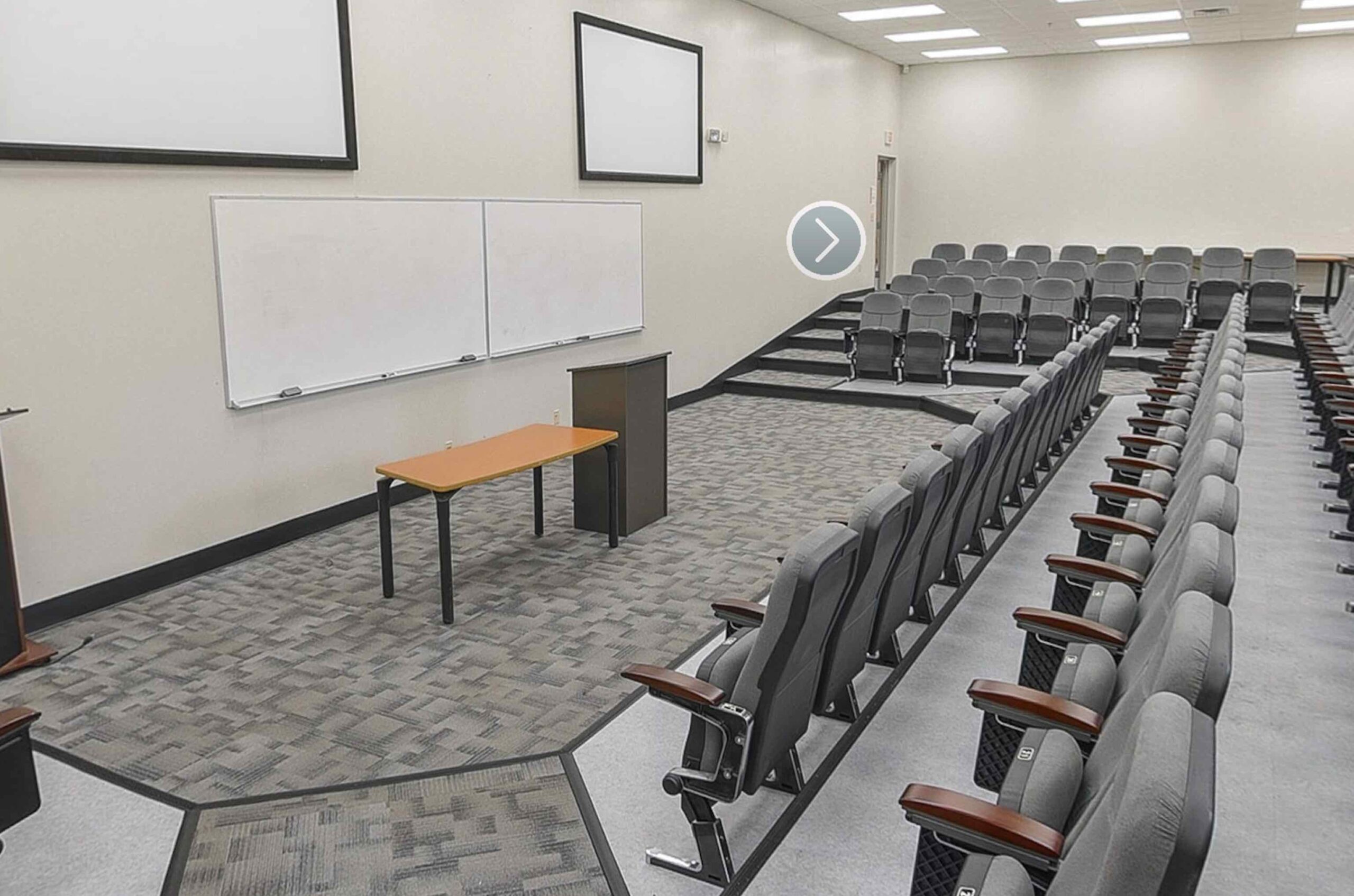Everything is moving online, and so are the potential buyers. Virtual tours are a convenient way for real estate shoppers to observe the houses they’re interested in from the comfort of their living room sofas, meaning they can spend time physically going from house to house and can pre-screen any houses that fit their criteria, so they’re only visiting houses they’re truly interested in.
For a real estate agent, this is very good news and bad news. The upside of this is that you will probably be showing your homes to clients who are seriously considering them, saving everyone valuable time.
The downside, however, is that if your listings don’t have a great online presence, then you are going to be missing out on a major chunk of potential buyers, as 51% of buyers now find their home online.
This means your success with selling homes will often be tied to just how great a home’s online profile is. So, what exactly goes into an effective virtual property tour, and how can you create an online experience that will wow potential buyers and persuade them to schedule a viewing?
Do I Really Require a Virtual Tour?
In its 2017 poll,”Real Estate in a Digital Age,” the National Association of REALTORS® (NAR) found that the vast majority of potential home buyers are using the world wide web to find houses, with 99 percent of millennials — the largest group of home buyers — utilizing websites to aid their search.
NAR also found that of respondents that used the internet in their search, 89% found photographs to be quite useful and 50 percent found virtual tours to be somewhat useful.
The significance of good internet visual tools isn’t something that should be overlooked if you want to stay informed about constantly-evolving technology, something mentioned by NAR as one of the biggest challenges facing real estate firms.
With more and more buyers starting their searches on laptops, tablets and mobile phones, sellers that want their listings to stand out need to provide a whole online experience of their homes for a potential buyer to even consider them.
Virtual tours can be even more vital in areas with a lot of out-of-state buyers, like popular vacation spots. Travel is expensive, and folks want to have a good idea of what they’re likely to be looking at before they purchase a plane ticket.
You Don’t Need to Be Super Tech-Savvy
When you think of a virtual tour, what are you picturing? A few photos of a house’s interior? A movie walkthrough? Or a whole 360-degree encounter with interactive floor plans and a 3D walkthrough?
When there are a lot of companies and software out there that can help you create the most technologically-advanced virtual tour available on the market, your main objective must be to create an online experience that is easy to navigate and does a fantastic job showing off your home.
Whether that means having a full-blown 3D walkthrough or a very simple photograph tour is up to your discretion (and budget), but there’s no need to use technology for technology’s sake.
Dangerfield only urges professional virtual walkthrough tours for luxury properties or if a home’s audience consists of a lot of out-of-state buyers.
There are a lot of vendors out there who can use you to create virtual tours for your listings. Some will even create interactive floor plans or give your potential buyers a dollhouse-style summary of the home that allows them to click through the rooms at their leisure.
Today’s technologies make creating your very own professional-grade virtual tour easier than ever. Zillow recently launched a tool that allows agents and sellers to easily create their very own 360-degree virtual tour from an iPhone.
With this tool, all you have to do is capture each room of the house using the Zillow 3D Home app, which utilizes the panoramic camera in your phone. The consequent virtual tour functions similar to Google Maps Street View, so users can click and drag their way through a home.
If it comes down to this, people seeing your listings aren’t looking to be more amazed by state-of-the-art home-imaging technology. They just want to find out what the house looks like so they can determine if they’d enjoy living in it. Whether you utilize third-party software or your smartphone, you have to meet that need. To do that, you will want to make sure your tour does a few basic items.
The Keys to a Good Virtual Tour
Picture or movie quality is going to be your top priority. Grainy or badly lit images will turn off potential buyers and make them less inclined to provide a house a second appearance. No matter what means you are using to create your virtual tour, if you are shooting the images yourself, make certain you’re aware of photography and videography basics beforehand.
Make certain that your staging is great. Don’t reveal buyers empty rooms. You want the space to look livable, so they can easily envision themselves living there.
Add some décor that offers the space a cozy, welcoming ambiance, but be sure that the area is also neat and doesn’t look cluttered. Attempt to keep the décor neutral if you can, as people can have a hard time overlooking a design scheme that isn’t their style.
Think through the path a person walking through the home would take, and mimic that with your tour. Where would they naturally cease to admire the crown molding? What would they want a close look at? If you are doing a more basic photo tour, take broad shots as well as close-ups, and when you place them, order them in a way that makes sense and feels organic.
Give Yourself a Quick Photography Lesson
It can’t be overstated: The quality of your images is paramount. Unless you’re hiring a professional, you should familiarize yourself with the fundamentals of photography and videography.
If you have great lighting, then it’s possible to take pretty good photos and video using your smartphone. However, if you plan on doing most of your own photography for your listings, you may want to think about buying a higher-quality camera.
Take care to learn some basics. You don’t need to become the next Ansel Adams, but understanding how to properly frame a photograph or mild a movie will go a long way in enhancing the quality of your images. Here are some basic photography and videography tips to get you started:
Let there be light. Turn on all the lights or bring your own if the house doesn’t have a great deal. Open curtains and shutters to let in as much natural light as possible. Do your shooting on a bright day. Unless you’re shooting outdoors in direct sun, it’s hard to have too much light, especially when shooting within a home.
Find your angles. When taking photos of rooms, you typically want to take from the doorway looking in. Make sure to include the floor on your shots and as small ceiling as possible. Pay attention to the way you frame your shots; anything extraneous or unsightly (piles of mess, garbage bins, etc.) should be left out. If you’re taking a photo of the house from the front, try to take it at a slight angle, to show the depth of the house.
Take more than you need. Take a lot of photos and do multiple takes of your videos. If you have a great deal of options, you get to be choosy and only present your best work. Having too few might mean you’re stuck if one of your images turns out to become blurry.
Minimize camera tilt. When you lean your camera up to get a shot of a room, the vertical lines on the wall can end up looking distorted. Attempt to keep the camera level and move the human entire body, not the camera to capture a broad shot.
Don’t use flash. If you choose to hire a professional, they may bring their own external flash to light their photos. If you’re taking your own, but don’t use your camera’s built-in flash, as it can make subjects seem unnatural and add glare to your images. If you find yourself having flash, earn additional external light sources. Even a cheap floor lamp can help better light your own shots.
Keep a steady hand. You might want to purchase a tripod. Tripods can be useful if the house you are shooting doesn’t get a good deal of light, as you can lengthen the exposure without graininess or blur. If you are recording video, then make sure your tripod can be rotated together with the camera on it, so that you can get smooth, sweeping shots of a room. If you have to get a moving shot, make slow, easy motions. Nobody wants to watch a shaky video.
Don’t bypass post-production. Your photos will likely require some touching up, as colors can warp in a photograph and make the picture look different than the actual thing. There are a lot of low-cost or perhaps free editing programs that will allow you to do basic touch-ups, such as toning down overly-bright areas or balancing pictures with orange tints to them.
Check your photographs to find out if they need to be cropped as well. Cropping to only include important components is an easy way to improve your pictures.
Aim for a Multimedia Presentation
Utilizing multiple formats for your listings allow you to present a much more holistic view of the home than if you were using a single moderate, especially if you’re not using a 3D presentation. Give potential buyers as much context as possible.
For example, if you’re filming a video walkthrough of a house, include photos of each room that zoom in on any interesting details. Make the experience complete by providing the house’s floor plan and indicating where on the floor plan each part of the tour takes place, to help orient viewers.
Your virtual tour doesn’t have to be limited to what you can do on your website, either. If you are active on social media, look at using Facebook’s 360-degree camera feature to quickly show off a beautiful room for the followers. Using numerous mediums and platforms will increase the amount of potential buyers you are reaching.







